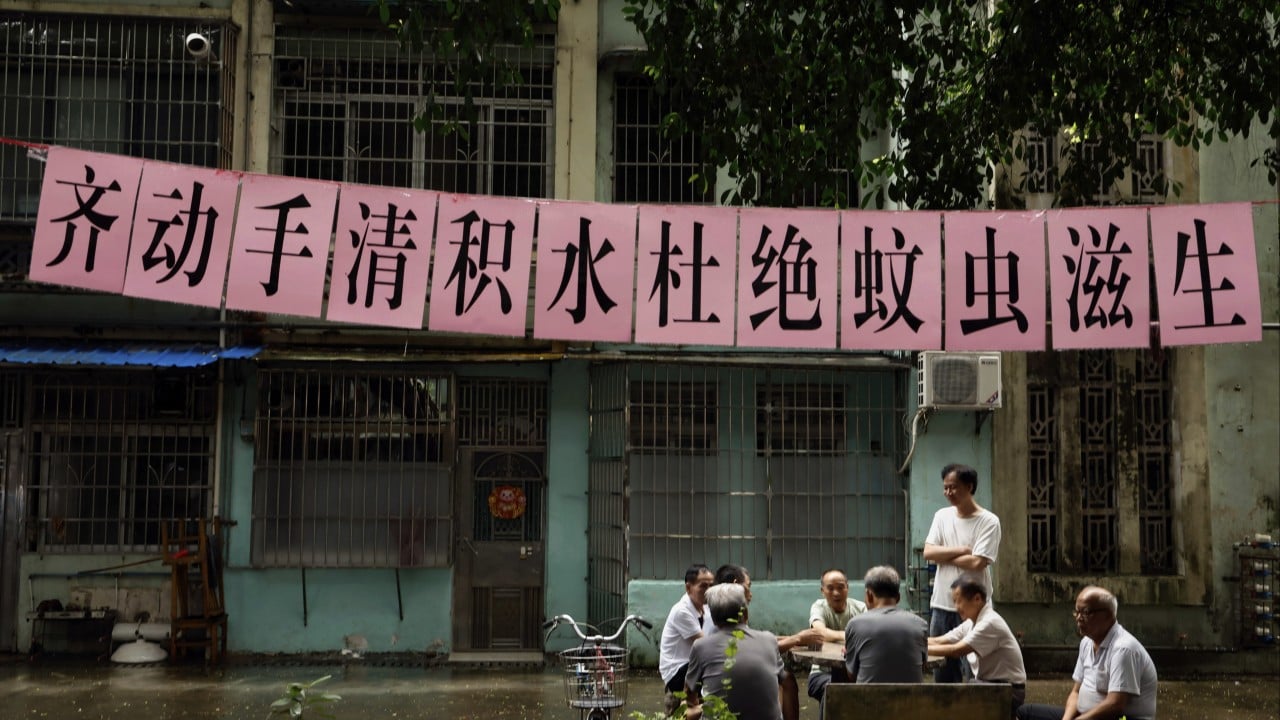When a drone’s camera picked up water buckets and potted plants on the balcony of a four-storey village house in Foshan – the city in Guangdong province at the centre of southern China’s chikungunya outbreak – local authorities acted quickly.
Advertisement
An official visited the house but was denied entry, prompting the village’s Communist Party secretary to lead a task force to the building, knocking and shouting at the front door until the residents finally came downstairs.
According to an article on the Nanhai district government’s official WeChat account on July 26, the team explained the hazards of breeding mosquitoes, the potential consequences of the disease, as well as the laws and regulations on pandemic prevention.
On the top floor of the residence, the task force found “a dozen buckets containing muddy, stagnant water and, upon closer inspection, swarms of wriggling mosquito larvae”, the article said.
In the battle against the mosquito-borne viral disease, Chinese authorities have turned to a familiar playbook, with some measures – such as quarantine, disinfection of neighbourhoods and real-name registration for fever medicine – recalling the response to Covid-19.
Advertisement
Some of the more intrusive measures have sparked concerns and complaints – such as a Beijing News report about a child with a fever whose parents refused to let community workers take a blood sample on August 3.

